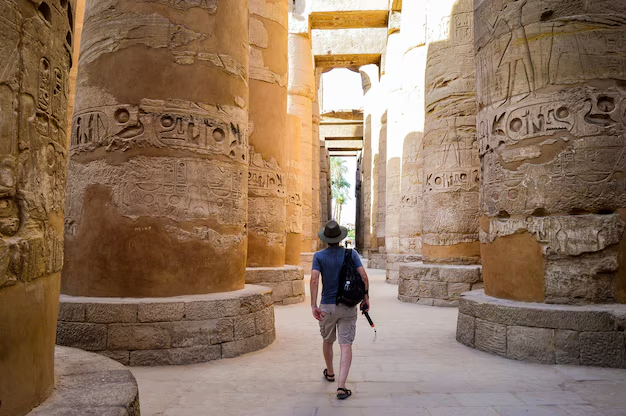Luxor Temple, located on the east bank of the Nile River in Luxor (ancient Thebes), is one of Egypt’s most important and well-preserved ancient temples. Unlike Karnak Temple, which was primarily dedicated to the god Amun-Ra and built over centuries, Luxor Temple is more closely associated with the pharaohs and the divine kingship of Egypt.
Luxor Temple was originally built during the 18th Dynasty of the New Kingdom (around 1380–1320 BCE) by Amenhotep III. It was later expanded and modified by subsequent rulers, including Ramses II and Alexander the Great. – The temple was dedicated primarily to the Theban triad of gods: Amun-Ra, his consort Mut, and their son Khonsu. It also became associated with the coronation of the pharaohs, as Luxor Temple was a place where the annual Opet Festival was celebrated.
The temple is entered through a massive pylon built by Ramses II, adorned with impressive reliefs depicting the pharaoh’s military victories and his divine status. This pylon leads to a grand courtyard.
Luxor Temple played a central role in the religious and political life of ancient Egypt. It was the site of the Opet Festival, which celebrated the annual renewal of kingship and the divine union between Amun-Ra and the reigning pharaoh. – The temple’s alignment with the Karnak Temple, connected by the Avenue of Sphinxes, highlights its importance in religious ceremonies and processions.
Luxor Temple stands as a testament to the grandeur of ancient Egyptian civilization. Its well-preserved structures and detailed carvings offer a window into the religious practices, royal rituals, and architectural innovations of the New Kingdom. The temple’s historical significance and aesthetic beauty make it one of Egypt’s most important and visited ancient sites.

